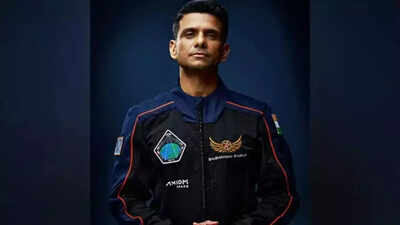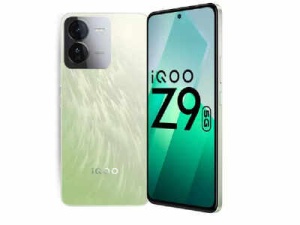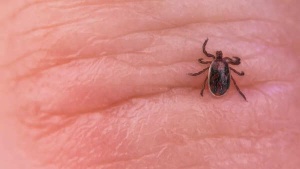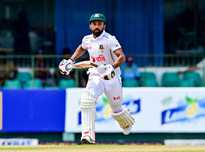Indian Astronaut to Connect with Students and ISRO Scientists from Space
Indian astronaut Shubhanshu Shukla, currently aboard the International Space Station (ISS) as part of the Axiom-4 (Ax-4) mission, is scheduled to interact with students and scientists at ISRO on Friday, July 4. This unique event will utilize ham radio, offering a direct link between space exploration and STEM education.

The interaction is part of the Amateur Radio on the International Space Station (ARISS) program. This program facilitates connections between students worldwide and astronauts in orbit, with the goal of inspiring interest in science, technology, engineering, and mathematics (STEM).
The event will be hosted at the U R Rao Satellite Centre (URSC) in Bengaluru, using a telebridge to connect with Shukla on the ISS. The scheduled time for the session is 3:47 PM IST (10:17 UTC) on Friday. Communication will be relayed through the K6DUE ground station.
What is Ham Radio?
Ham radio, also known as amateur radio, is a licensed communication system operating on radio frequencies designated for non-commercial purposes. It's a popular hobby among enthusiasts and often serves as a crucial communication tool during emergencies when standard lines are disrupted.
In space missions, ham radio provides a reliable, hands-on communication method. It gives astronauts a direct line to students and amateur operators on Earth, adding a personal dimension to science education. For students, this is an unparalleled opportunity to speak directly with an astronaut in space.
Shukla's Experiments Aboard the ISS
During his 14-day scientific expedition on the ISS as part of the Axiom-4 mission, Shubhanshu Shukla is involved in several experiments, including:
Microalgae: Researching microalgae's potential as a sustainable, nutrient-rich food source for astronauts. These organisms also play a vital role in oxygen recycling and waste management. Shukla is monitoring the growth of microalgae samples through high-resolution photography. Understanding how microgravity affects algae growth could pave the way for closed-loop life-support systems essential for future missions to the Moon, Mars, and beyond.
Neuro Motion VR Project: Using virtual reality headsets to assess cognitive performance in microgravity. Astronauts wear VR headsets and perform attention-based tasks while their brain activity is monitored using functional near-infrared spectroscopy (fNIRS). This data helps scientists understand the impact of space travel on mental acuity, motor function, and memory—critical information for astronauts performing vital tasks under pressure in confined environments during deep space exploration.
The Telemetric Health AI: This project combines biometric data with AI-driven mission analytics to track the effects of space on cardiovascular health and balance systems. By using real-time data analysis and predictive models, the research aims to transform in-flight medical monitoring and potentially develop remote diagnostic tools for use in rural or emergency situations on Earth. This highlights the potential for medical innovation through space research.
Newer articles
Older articles
 iQoo Z9 Turbo: Rumored Specs Emerge – Snapdragon 8s Gen 3, 6000mAh Battery Highlighted
iQoo Z9 Turbo: Rumored Specs Emerge – Snapdragon 8s Gen 3, 6000mAh Battery Highlighted
 UNESCO's World Heritage Wonders: Unveiling 10 Iconic Sites, From Petra to the Pyramids
UNESCO's World Heritage Wonders: Unveiling 10 Iconic Sites, From Petra to the Pyramids
 Tick Bite Paralyzes Fitness Influencer: A Wake-Up Call for Outdoor Enthusiasts
Tick Bite Paralyzes Fitness Influencer: A Wake-Up Call for Outdoor Enthusiasts
 Shadman Islam Defends Bangladesh Batters After Day 1 Struggles Against Sri Lanka
Shadman Islam Defends Bangladesh Batters After Day 1 Struggles Against Sri Lanka
 JPG to PDF: A Comprehensive Guide for Graphic Designers & Professionals
JPG to PDF: A Comprehensive Guide for Graphic Designers & Professionals
 England's Bold Claim: Could They Have Chased Down 450 Against India?
England's Bold Claim: Could They Have Chased Down 450 Against India?
 5 Often-Missed Warning Signs of Bladder Cancer You Need to Know
5 Often-Missed Warning Signs of Bladder Cancer You Need to Know
 Freestyle Chess Grand Slam Loses India Leg: Sponsorship Issues Sideline Magnus Carlsen
Freestyle Chess Grand Slam Loses India Leg: Sponsorship Issues Sideline Magnus Carlsen
 Ashada Gupt Navratri 2025: Dates, Hidden Significance, and Sacred Rituals Unveiled
Ashada Gupt Navratri 2025: Dates, Hidden Significance, and Sacred Rituals Unveiled
 KL Rahul Puts Country First, Prioritizes England Tests Over Newborn Child
KL Rahul Puts Country First, Prioritizes England Tests Over Newborn Child